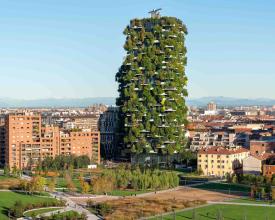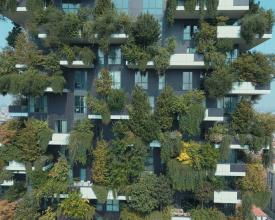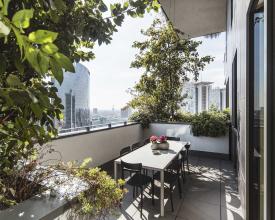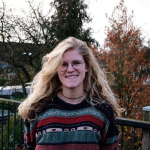
Bosco Verticale, biodiversité architecturale - une nouvelle alliance entre les forêts et l'architecture
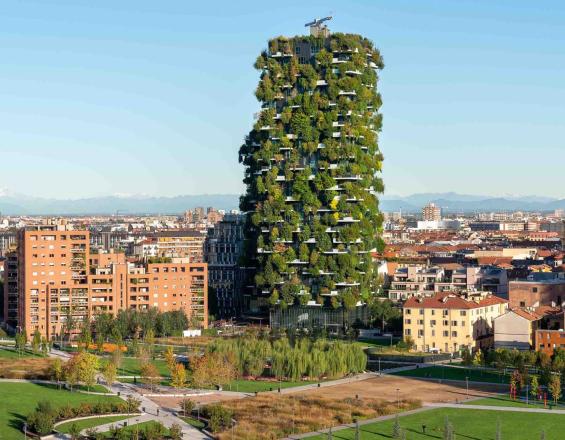
Bosco Verticale est un ensemble de deux tours offrant 3 000 mètres carrés d'espace de vie dans le centre de Milan. Les 20 000 plantes qui poussent à l'extérieur ont fait de ce bâtiment une icône internationale de la conception biophilique. L'idée de Stefano Boeri pour ces bâtiments était de créer une "maison pour les arbres qui abrite les humains et les oiseaux". Les tours abritent 800 arbres, 15 000 plantes vivaces et 5 000 arbustes, soit l'équivalent de 30 000 mètres carrés de forêt sur terre. Dans le même temps, le rideau vert présente des avantages pour le microclimat à l'intérieur et autour des bâtiments. Pour n'en citer que quelques-uns, il régule l'humidité et la température et absorbe le CO2 et les microparticules. La gestion est assurée par des "jardiniers volants" qui descendent du toit du bâtiment pour l'entretien. Les systèmes d'irrigation sont numériques et contrôlés à distance. L'eau filtrée des tours est utilisée pour réduire l'empreinte hydrique. Les bâtiments de Bosco Verticale constituent une alternative pour créer de l'espace pour la biodiversité et séquestrer le carbone dans une zone urbaine dense.
Contexte
Défis à relever
Emplacement
Impacts
Le projet montre que les bâtiments et les espaces verts peuvent être imbriqués dans des conceptions durables qui offrent de multiples avantages aux résidents et à la nature. Les tours vertes sont un point névralgique de la biodiversité à Milan. Quelques années après la finalisation de la forêt verticale (2014), on a constaté que le bâtiment abritait quelque 1 600 oiseaux et papillons. En même temps, les forêts verticales sont un outil pour l'absorption du CO2 dans les bâtiments - la végétation sur le bâtiment convertira environ 20 000 kg de carbone chaque année.
Le Bosco Verticale montre également aux villes la possibilité de combiner un développement urbain à haute densité avec la plantation d'arbres. Ce projet permet une densification sans compromettre l'accès à la nature, réduisant ainsi la pression sur l'arrière-pays de la ville.
Enfin, le concept architectural de la foresterie urbaine s'étend à d'autres zones métropolitaines telles que Eindhoven (Trudo Vertical Forest), Utrecht (Wonderwoods) et Anvers (Palazzo Verde). Alors que les tours de Milan ont été créées pour des groupes à hauts revenus, la forêt verticale d'Eindhoven est construite spécifiquement comme un logement social. Pour généraliser le concept, le studio de Stefano Boerie recherche des systèmes de construction reproductibles qui pourraient aider d'autres villes et promoteurs à adopter des pratiques similaires et à rendre les forêts verticales accessibles à tous.

